I'll try to document this build:
From the brief description:
I will design and make a smallish writing desk which will be (hopefully) pleasing to the eye, and be able to hold laptop and cable modem, plus keep a shed load of cables and supplies out of sight. And a pen. The design will have to be airy and light so that it doesnt clutter/invade the room but still get noticed for its subtelty. it will be used as a ocasional desk for the laptop, nothing heavy duty. a cross between a desk and a hall table.
level will be intermediate, i think.
Soooo, after thinkering some more with the leg design, the design is well underway. I also took some good advice on the leg/top joins, and decided on most of the others. Time to get going !
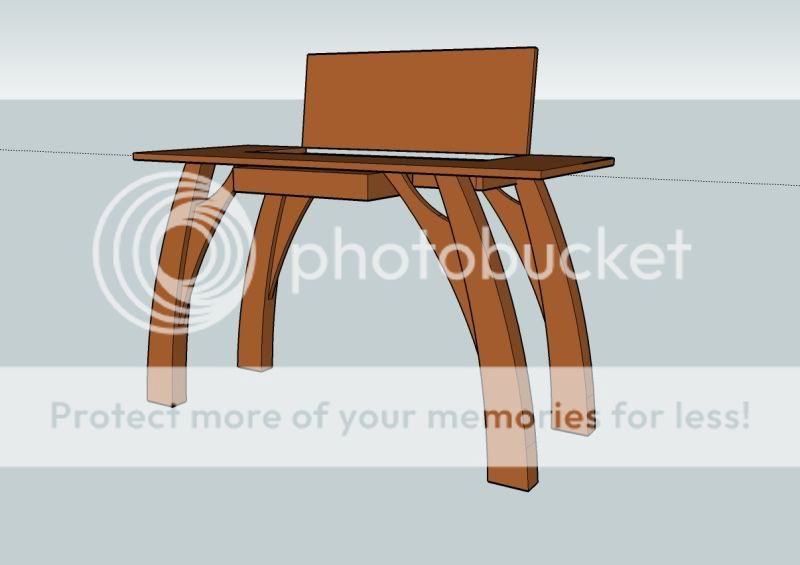
So the first thing i did this weekend was to get the first template for the legs ready.
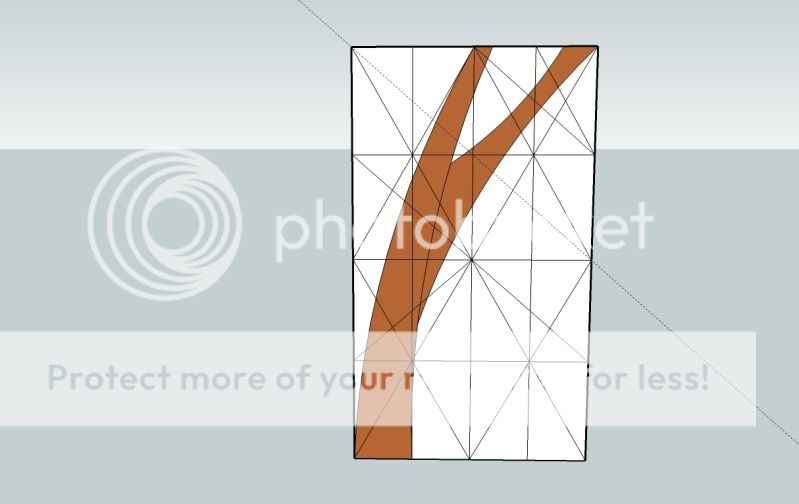
I transfered the design onto some MDF, and used this to mark the oak stock.


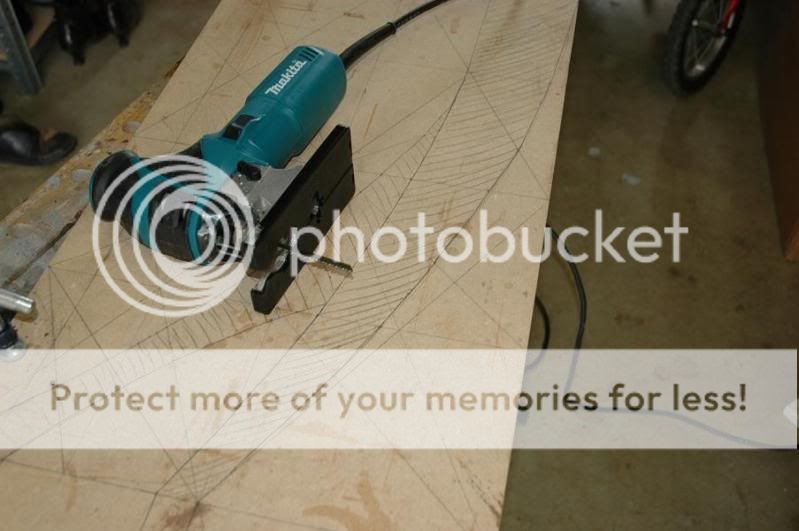
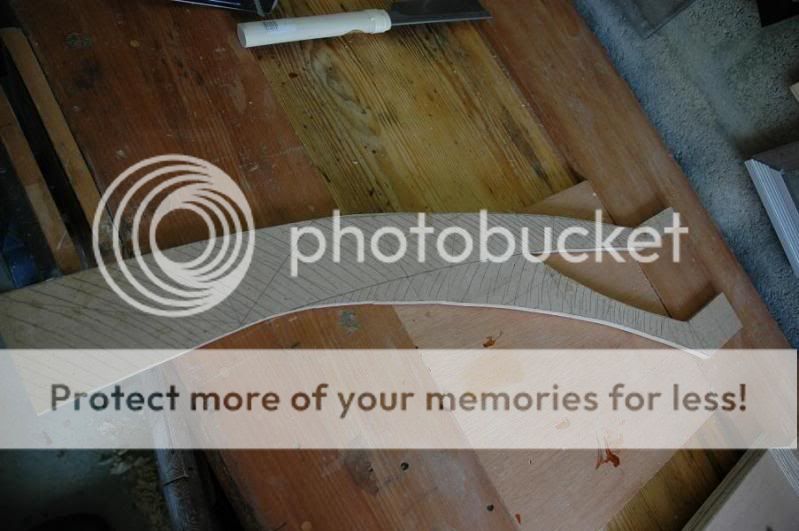

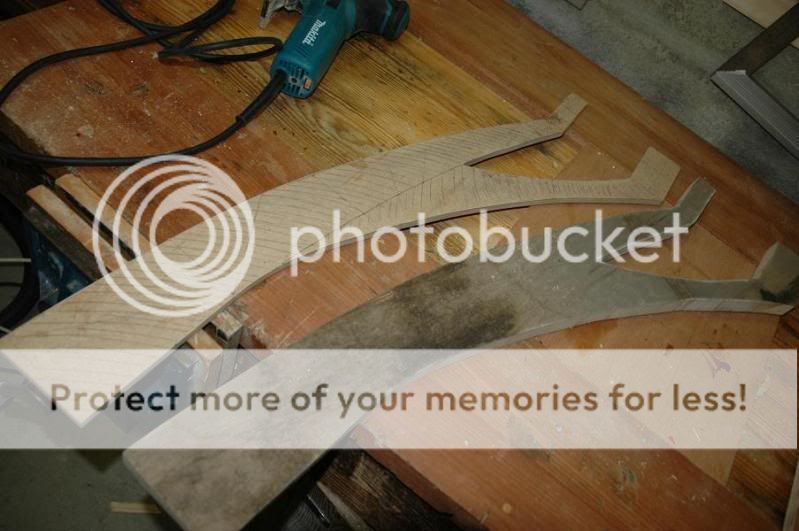
I picked up a suitable piece from the pile. This stock should be enough to get the project finished ! would you beleive i paid only 70euros for this lot (21 plates of well dried oak!)!
I then started cutting the first of four leg "cores". The legs will be made from 3 pieces laminated. only the middle one has the middle brace. So i started cutting those first. Then for the others, i can just trim the extra bit from the MDF template.
I will also use the template as a copying mask and a router bit with a roller bearing.
From the brief description:
I will design and make a smallish writing desk which will be (hopefully) pleasing to the eye, and be able to hold laptop and cable modem, plus keep a shed load of cables and supplies out of sight. And a pen. The design will have to be airy and light so that it doesnt clutter/invade the room but still get noticed for its subtelty. it will be used as a ocasional desk for the laptop, nothing heavy duty. a cross between a desk and a hall table.
level will be intermediate, i think.
Soooo, after thinkering some more with the leg design, the design is well underway. I also took some good advice on the leg/top joins, and decided on most of the others. Time to get going !

So the first thing i did this weekend was to get the first template for the legs ready.

I transfered the design onto some MDF, and used this to mark the oak stock.






I picked up a suitable piece from the pile. This stock should be enough to get the project finished ! would you beleive i paid only 70euros for this lot (21 plates of well dried oak!)!
I then started cutting the first of four leg "cores". The legs will be made from 3 pieces laminated. only the middle one has the middle brace. So i started cutting those first. Then for the others, i can just trim the extra bit from the MDF template.
I will also use the template as a copying mask and a router bit with a roller bearing.



































